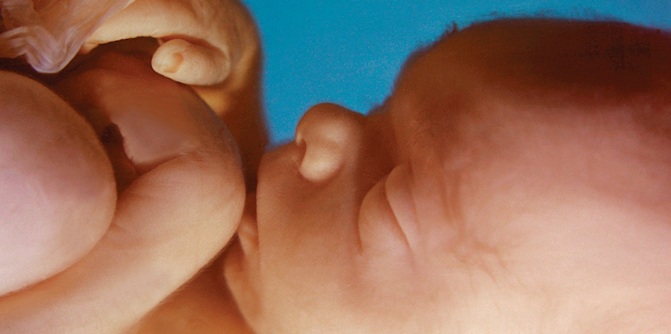
Clinic worker talks about baptizing aborted babies
… When it’s a big fetus, you will hear them asking a lot of questions: “is it a boy or is it a girl?”, “Will it be baptized?” We’ve had many requests for that too. We do it, it doesn’t mean a thing. But if it rests somebody’s peace of mind, you baptize a fetus. I mean for the psychological effect. It’s not recognized by the church, how can you murder a fetus and then baptize it? I feel if it makes the woman happy, why not? If it satisfies her psychological hangup, whatever it is.… Anything under 24 weeks goes for the incinerators. They ask you what you’re going to do with the fetus, you can’t say incinerate it. I tell them it goes to city burials.
Source: Magda Denes, Ph.D., In Necessity and Sorrow: Life and Death in an Abortion Hospital (New York: Basic Books, Inc. 1976), pp. 152-15
Late-term abortions in this particular clinic were done by saline induction. In a saline abortion, caustic salt solution is injected into the woman’s uterus, slowly burning the baby and poisoning him or her over the course of a few hours. When the baby is dead, labor is induced, and the woman essentially passes, or “gives birth” to, a dead baby. Often women who had these abortions could feel their babies kicking inside them as they died, leading a lot of women to suffer from deep emotional trauma, even many years later.
Nancy Jo Mann, who would go on to found a support group for post-abortion women, describes her abortion by this method:
I was so naive. I trusted him. After all, he was a doctor. A respected and educated man. And like everyone else, I had always heard that legal abortion was “safe and easy.” It wasn’t until he had me on the table that I began to question these illusions. It wasn’t until he pulled out an enormous syringe that I became scared. The needle alone was four inches long. Suddenly I realized that this was not going to be as easy as he had implied. …Of course, Mann’s baby died anyway.
After the fluid was withdrawn, he injected 200 cc’s of the saline solution–half a pint of concentrated salt solution. From then on, it was terrible. My baby began thrashing about–it was like a regular boxing match in there. She was in pain. The saline was burning her skin, her eyes, her throat. It was choking her, making her sick. She was in agony, trying to escape. She was scared and confused at how her wonderful little home had suddenly been turned into a death trap.
… There was no way to save her. So instead I talked to her. I tried to comfort her. I tried to ease her pain. I told her I didn’t want to do this to her, but it was too late to stop it. I didn’t want her to die. I begged her not to die. I told her I was sorry, to forgive me, that I was wrong, that I didn’t want to kill her.
Mann may have been ascribing to her unborn child a level of awareness that the child could not have had. But it is clear that a saline abortion was a horrific, painful experience for the baby – and a horrific and painful one for the mother as well.
Saline abortions fell out of favor several decades ago; they were too dangerous for the mother, and they sometimes resulted in a live baby. In one case, after a saline abortion, a baby girl was born alive, and the abortion doctor strangled the child. He was brought up on charges . A live baby can be very inconvenient for abortion providers. Nowadays, abortions in the second trimester are usually done by dismemberment. No chance of a live baby after that.
It is easy to imagine that after going through the horrible experience of feeling their babies die within them, some women might be torn by remorse and wish to baptize their babies in order to show them some kind of compassion after death. In other cases, the woman may have rationalized her abortion decision to the point where she planned beforehand to have the baby baptized to satisfy some spiritual want or need. Either way, this clinic worker is willing to accommodate these women, even though she feels that the gesture is meaningless.
As an atheist, I cannot comment on the benefits of baptism or the theological arguments about baptizing the dead. I cannot comment on the existence of souls or where they go after death. Obviously, baptism of the baby might be a coping technique for some of the women, a way to acknowledge their babies’ deaths.
It is also interesting that the clinic worker uses the word “murder” to describe what the woman did to her “fetus.” You can’t murder something that is not alive, and the term murder is generally not used to describe the killing of anything but a human being. Was this clinic worker admitting that the fetuses they killed were people? She seems to place the blame for the babies’ deaths squarely on the shoulders of the women who come in for the abortions, abdicating responsibility.
Either way, both the aborting woman and the clinic worker know that something more than a mere surgical procedure was being done. One does not “baptize” tissue.
Source: Magda Denes, Ph.D., In Necessity and Sorrow: Life and Death in an Abortion Hospital (New York: Basic Books, Inc. 1976), pp. 152-153
Source: LiveAction News









No comments:
Post a Comment